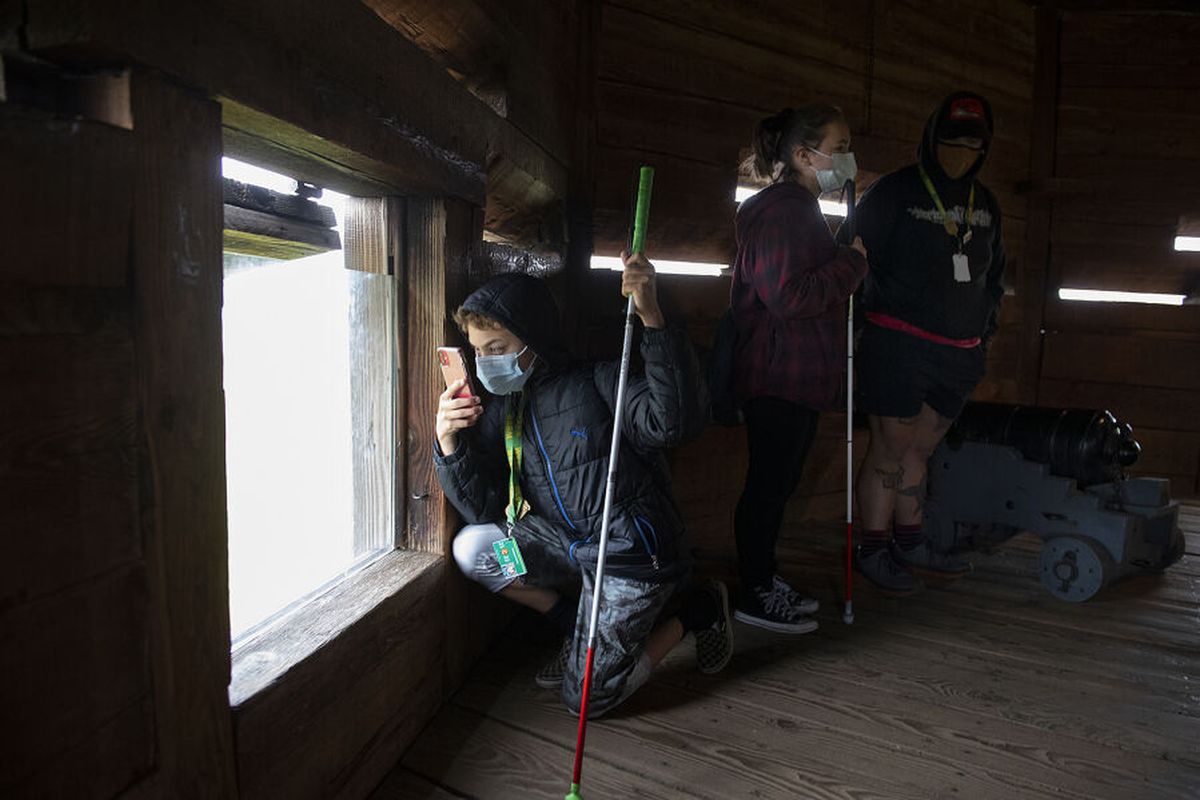Students at Washington State School for the Blind celebrate independence

VANCOUVER, Wash. – White Cane Day was first established as a holiday to promote the cane as a symbol of safety for the blind and visually impaired. Today, it’s become a symbol of independence.
On Thursday, students from the Washington State School for the Blind celebrated the holiday with outdoor walks and demonstrations throughout Vancouver.
Because the COVID-19 pandemic has largely kept us inside more than usual over the past year (and change), students are excited to get back outside, said Ashley Woodruff, an orientation and mobility specialist for the school.
“It’s a day to celebrate,” Woodruff said. “We encourage our students to get experience with multiple different kinds of transportation. That’s really empowering for them.”
Though the white cane first emerged in the 1930s as a way for the visually impaired to be safely recognized by motorists, it was in 1964 that President Lyndon B. Johnson declared Oct. 15 as White Cane Safety day – the only nationally recognized holiday for the blind.
The School for the Blind celebrated one day early this year due to scheduling conflicts on the holiday itself. Students spent the school day venturing throughout the city, including gatherings at the waterfront, Fort Vancouver National Historic Site and Pearson Air Museum. Others took a trip to Portland to ride local public transportation.
Amanda Rodda, a teacher at the school, led a group of students through the park and parade grounds at Fort Vancouver. Despite the rain, she and the students were excited to be out and about – especially because it meant they had a chance to get out of the classroom for a few hours.
“I love White Cane Day because it means we don’t have to do any assignments,” said one student – whose sentiments were met with laughter and agreement from her peers.
Though just in their early teens or younger, the students each stressed the importance of how the cane represents their ability to get around independently.
“You’re a pretty independent kid. You don’t want someone holding your arm and dragging you around, right?” Rodda asked one of her students.
“Um, no thank you,” the student responded – another comment that elicited giggles from the group.
That same student recalled how White Cane Days from years past have held some of her favorite memories. She recalled a time two years ago when her class celebrated by going to Esther Short Park, where one statue in particular featured vivid and detailed descriptions.
Last year, the holiday was largely limited to virtual celebrations and organized remote instruction on the history and importance of how it has changed since the 1960s. Students were encouraged to get out and walk with their canes, but the pandemic prevented the chance to organize in-person gatherings.
As Rodda’s students prepared to continue on their route, some said they were excited to visit the airfield. Others rejoiced at the chance to stop by the fort’s gift shop. Regardless of weather or destination, they said, the holiday is far more exciting than the days of online learning that defined the last year and a half.